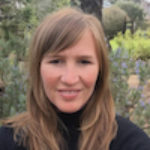Exploring Climate Change Through Art in the Science Classroom
Our climate is changing rapidly. In the last few months, we’ve seen an increase in powerful hurricanes throughout the southern United States and recently in Ireland, floods in Asia, and wildfires in California. These extreme weather events have impacted the natural world—from forests to entire ecosystems—destroyed homes and neighborhoods, and displaced thousands of people, creating climate refugees.
Climate change is a topic that can be covered across multiple subjects, bridging a gap between science, history, the humanities, and the arts. How might this multidisciplinary topic spark students’ imaginations, inspire introspection and generate innovative thinking?
Gaining STEAM
Merging art with science creates more access points to engage students’ creativity. The STEAM movement—integrating the arts into science, technology, engineering and math—has been gaining momentum over recent years. As the astronaut Mae Jemison, said, "The difference between science and the arts is not that they are different sides of the same coin ... or even different parts of the same continuum, but rather, they are manifestations of the same thing. The arts and sciences are avatars of human creativity.”
Creative Response to Climate Change
Mary Ellen Newport, Ph.D., agrees with this approach. She is the Director of the R.B. Annis Department of Math and Science at Interlochen Arts Academy, a fine arts boarding high school on a 1200-acre campus in northwest Michigan. Earlier this year, as the Executive Director of the Global Oneness Project, I visited Interlochen Arts Academy to give a digital storytelling workshop with Dr. Newport’s ecology class. The goal: students would make a photo essay as a creative response to climate change.
A Conversation with Dr. Newport
Dr. Newport and I discussed the importance of teaching climate change in her science classroom as well as addressing the following question: How are her students using art to express their points of view about climate change?
How do you explore climate change in your science classroom?
Whether explicitly or not, ALL of my teaching touches on climate change! Extreme weather is a real hook for students. Either their friends, families, or themselves are experiencing hurricanes, fires, drought and floods. My students and their families come from all around the world— from Alaska to Australia, the Pacific Northwest, Texas, and Florida to the Middle East. They are not seeing climate change as something that might happen in the future. It is happening right here, right now.
I don’t believe I gave them that perspective; I gave them a framework to think about the science.
In my class, each student researches a facet of climate change—radiative forcing, deforestation, food security, acidification of the ocean, glacial melting, Paleocene-Eocene Thermal Maximum (PETM), etc. and they present to each other. They often uncover new data or factors that I’m not aware of. In the assessment for this unit, students work together to make connections among all of the climate change factors. This work reinforces the theme for the class, which is that everything is connected!
In what ways do art and science merge in your classroom?
At Interlochen Arts Academy, I have students who are studying and practicing a variety of art forms. Students—including visual artists, dancers, musicians, composers, writers and filmmakers—are all in the same science class and are thrilled to explore the intersection between these numerous art forms.
When we go out to explore the local species and habitats, they see through the lens of their artistic perspectives. A student will fall in love with salamanders, or sassafras, or just the creek that runs between the lakes (Inter-Lochen). I had an international student who created the most beautiful watercolors of local species, showing the field marks that help distinguish between red pine and white pine, tree frogs and wood frogs, all of which she had seen in our backwoods.
Describe the student photography project—a creative response to climate change.
Working in small groups, students researched and explored the Global Oneness Project’s climate change collection to put a face to the issues of climate change. They watched a short film When a Town Runs Dry, by Joris Debeij about the California drought and viewed the photo essay “Melting Away” which documents icebergs in the polar regions from Native American photographer, Camille Seaman. After discussing these multimedia stories in depth, students were challenged to create a photo essay as a creative response to climate change.
Students could choose to include one or all of the following themes in their photo essay: conservation, bearing witness, power of perspective, and reverence for the environment. They were given the following questions to consider: What will you keep/throw away? What responsibility does your generation have to the Earth? What would your generation say to the Earth? What would the Earth say to your generation?
One group’s photo essay, titled “Artificial/Natural”, responded to all of these questions. Through their photos, in various locations on/off campus, students Annalise Lozier, Luke Broyles, Joe Ryan, and Ari Coester documented the following points of view in connection to climate change: the impact of human behaviors, the disconnection to the natural world due to the influences of technology, and a recognition that above all, there is a need to embrace our natural world with respect and reverence.
How did this project impact your students’ thinking?
Creating art, in this case about climate change, clarifies for the artist what she does or doesn’t understand. Tackling the big issues of climate change through art allows students to face the particulars, whether that is making sense of data or tapping into their feelings. I was surprised at how open, positive, and hopeful my students are. They recognize how messy the scientific process is and how it requires just as much creativity as their arts practice. They also know that art has a power to move that science does not. My hope is for students to feel empowered to create, to speak, to synthesize, and collaborate. And then mobilize!
As I worked with Dr. Newport’s students, I was impressed by their insights and passionate responses. The captions to their photo essays revealed their perceptions about the beauty and science of the natural world as well as their place within it. The following is my favorite caption from the photo essay “Artificial/Natural”: “The boughs of the tree bow not in deference to us, but to nature.”
Cleary Vaughan-Lee is a mother of two and the Executive Director of the Global Oneness Project, an online multimedia platform which offers free multicultural stories and companion lesson plans. The Project’s films and lessons have been featured on The New York Times, National Geographic, PBS Learning Media, and the Smithsonian. Follow her: @cvaughanlee
Mary Ellen Newport, Ph.D., has taught high school science for eighteen years. Her background is in evolutionary biology. She has been integrating art into her ecology classes at Interlochen Arts Academy since 2010. She lives on beautiful Rainbow Pond, where in her downtime she writes poetry about her love for the natural world. Follow her: @MENewport
Join the PBS Teachers Community
Stay up to date on the latest blog posts, content, tools, and more from PBS Education!



